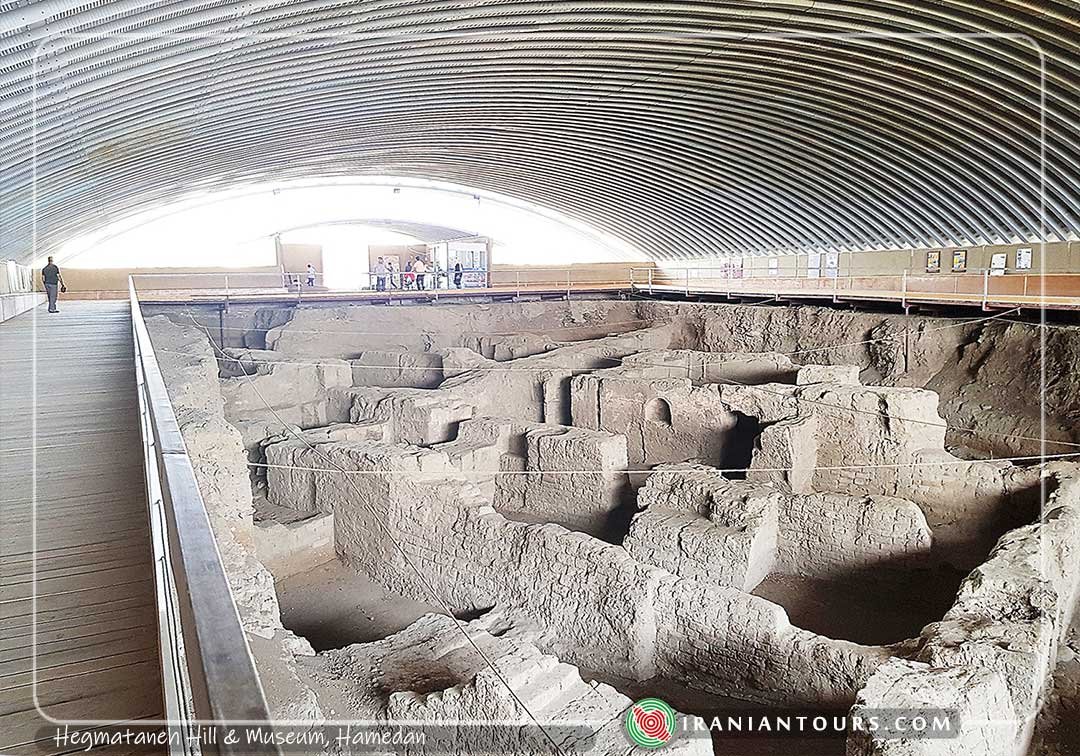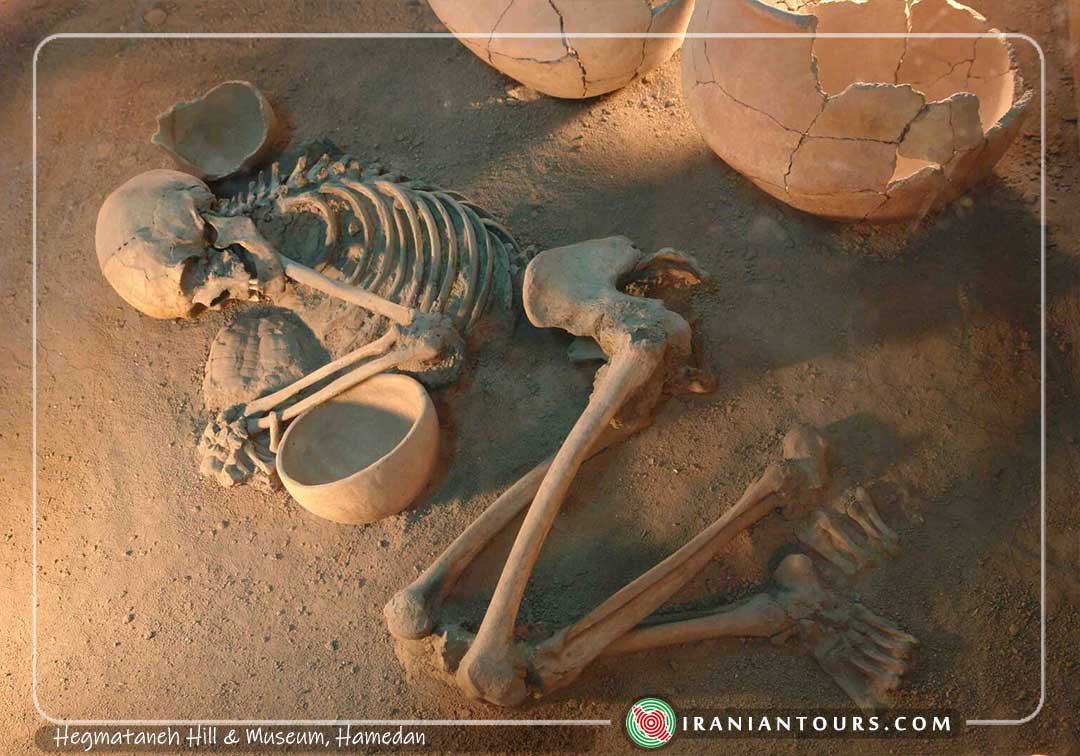Hegmataneh Mound & Museum
Also known as Ecbatana, located on the imperial road, and connecting Persepolis to Sardis, Ecbatana used to be the capital of the Median Empire in the 8th century B.C and the summer capital of the Achaemenid dynasty. The most prominent description of this site belongs to Herodotus. It is recorded that the name “Hagmatana”, meaning a place of gathering, was first mentioned in a Babylonian text entitled “Agamatanu”.
This 30-acre mound is the largest Ancient mound in Iran, located in Sar Qale district, one of the most prominent historical places in the world. The earliest excavations were carried out in 1913 by Charles Fossey and continuous excavations were carried out between 1983 to 2000 by Mohammad Rahim Saraf, the first Iranian archaeologist of this site. The important results of these excavations were identifying the rectangular units, the irrigation system, and the passages of Ecbatana.
Further excavations revealed that the materials used in the construction were mainly mudbrick and brick. Seven ramparts, each of which had a different color and belonged to one of the nobles, were also recognized. Normal people had to build their houses outside these ramparts. Darius III ordered the building of a pavilion and 300 buildings to keep his treasures and properties. A complex of buildings has been found with each of these buildings holding a central hall and three flanking rooms. The irrigation system and the defensive walls of the city were found later.
Among the outstanding objects unearthed here is the golden tablet named Ariyaramna which is kept in Berlin museum, the golden tablet called Arshama preserved in the private collection of Marcel Vidal, the golden and silver tablets of Darius I with trilingual inscriptions depicting the construction of palaces in Ecbatana in the National Museum of Iran, the silver cup under the name of Artaxerxes in Metropolitan Museum of New York, the golden dish in Georgian collection, New York, and several Achaemenid column bases. The most intact column bases date back to Artaxerxes II’s era which is now being kept at the National Museum of Iran.
On the eastern part of the Hegmataneh mound, there is a temporary museum exhibiting potteries, metal, and stone items dating back to the pre-Islamic and post-Islamic eras. The iconic items of the museum are the Achaemenid column bases and the bull’s head pottery. The Parthian coffins and the tombstones dating back to the Islamic era are also on display in this museum.





